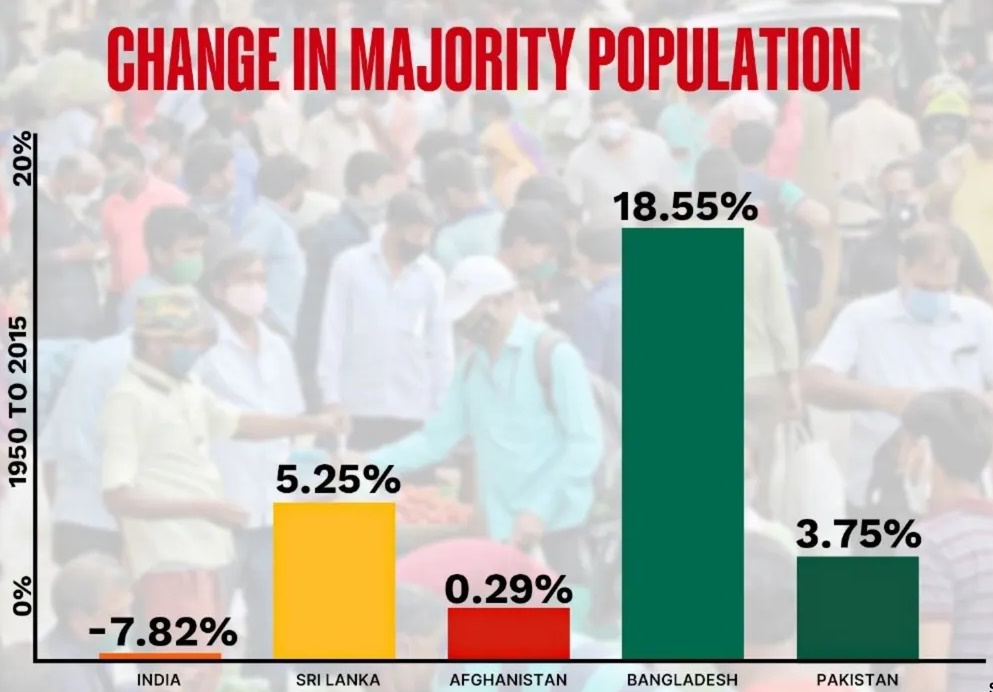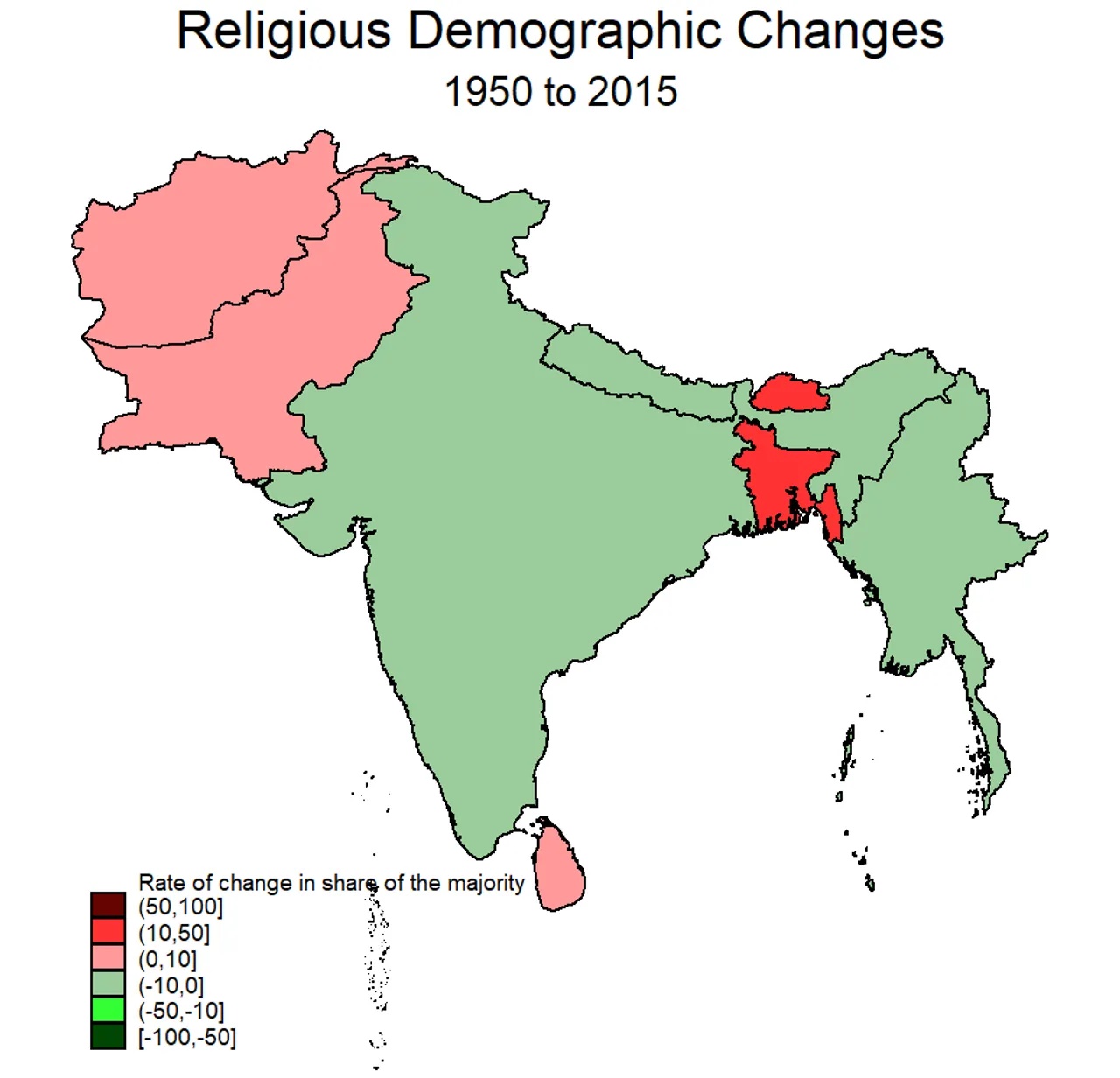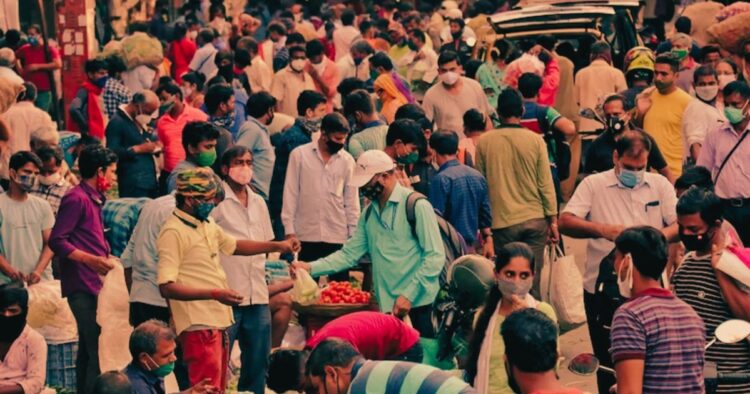Bharat has seen a significant decline in its majority religious population over the years, according to a recent analysis by the Economic Advisory Council to the Prime Minister (EAC-PM). The study, authored by EAC-PM members Shamika Ravi, Apurv Kumar Mishra, and Abraham Jose, reveals a notable 7.82% decrease in the majority population between 1950 and 2015.
This decline, second only to Myanmar’s 10% reduction, among 167 countries analyzed, has sparked discussions about the changing religious landscape in Bharat.

Contrary to concerns about minority marginalization, the analysis shows a different trend. The share of Bharat’s Muslim population, for instance, has increased from 9.84% in 1950 to 14.09% in 2015, marking a significant 43.15% rise.
This growth is notable within the South Asian neighborhood, where Bharat has witnessed the most significant decline in majority population, second only to Myanmar.

The Economic Advisory Council’s working paper challenges the narrative of minority endangerment, asserting that minorities in Bharat are not just protected but indeed thriving. Drawing data from the Religious Characteristics of States Dataset Project – Demographics published by the Association of Religion Data Archives (ARDA) in 2019, the analysis underscores the positive trends among minority groups in Bharat.
The report highlights the flourishing status of minority communities in Bharat, encompassing not only Muslims but also Christians, Buddhists, and Sikhs.
For example, between 1950 and 2015, the Christian population rose from 2.24% to 2.36%, marking an increase of nearly 5% during the period. Similarly, the Buddhist population saw growth from 0.05% in 1950 to 0.81%.
Bharat’s conducive environment fostering diversity plays a crucial role in the prosperity of minority groups, as noted in the report. The country’s legal definition and equal constitutional rights for minorities protect them from external threats, contributing to their progress and integration into society.
Amid concerns about minority populations in neighboring nations like Pakistan and Bangladesh, Bharat’s welcoming environment has prompted minorities from these countries to seek refuge. The recent implementation of the Citizenship Amendment Act (CAA) provides legal pathways for migrants from select religious minorities in these countries to obtain Bharatiya citizenship, addressing human rights concerns.
Despite ongoing political rhetoric surrounding minority issues, the report highlights the tangible progress made by minority communities in Bharat. Efforts by the central government have uplifted marginalized groups, including Muslims, enabling their social, economic, and political empowerment.
However, amidst these positive trends, there’s a cacophony of voices raising concerns about minorities in danger, particularly during ongoing elections. Some opposition leaders have called for ‘vote jihad’ and full Muslim reservation, while others advocate for more rights for minority communities.
Yet, the consistent rise of minority groups in various sectors of Bharatiya society challenges these narratives, denouncing false claims of marginalization.

















Comments